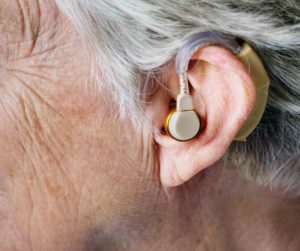
The development of the hearing aid has come a long way since the Middle Ages.
Hearing loss has been around before man can say. Hearing aid technology goes back a long way, and the progress it has made and is still making is impressive. In the Middle Ages, people thought that those with hearing loss had more problems than just a lack of hearing. They were looked down upon until a monk named Pedro Ponce taught the deaf sons of a nobleman how to read, write, do math, and speak. Meanwhile, the future of the hearing aid was looking up.
Ear Trumpets
The use of the ear trumpet lasted over several centuries, from as early as the 13th century through the 19th century. At first, those with hearing loss were using natural materials like the hollowed-out horns of animals as well as shells. The later ones continued to be made from horn and seashell, as well as sheet metal, silver, and wood. These devices did not work too well; their function was to funnel the exterior sound into the user’s ear, rather than amplify sound.
Electric Hearing Aids
Shortly after the advent of the telephone, the technology of hearing aids took its first great upturn. Thomas Edison, the inventor of electricity, enabled telephones to receive higher decibels of electricity through a carbon transmitter and so amplify the sound that came through them. This invention would lead to the first hearing aids built on the same principle. Carbon hearing aids, although producers of somewhat scratchy noise, amplified sound into a person’s ear.
Vacuum Tube Hearing Aids
In the early 1920s, the mechanism for amplifying sound changed over to the vacuum tube. It did an excellent job, but it needed a good deal of downsizing, as the original invention was a hefty-sized wooden box. By the 50s, these hearing aids were pocket-sized with wires connecting to wearable earpieces.
Transistor Hearing Aids
By the middle of the 20th century, the power of hearing aid innovation went back to the producers of the telephone. Bell Telephone Laboratories invented the transistor, a switch controlling the movement of electrons. Hearing aid developers could now create hearing aids that could fit totally behind or inside the ear.
Digital Hearing Aids and Beyond
From then on, hearing aids only got smaller. By the early 2000s, most hearing aids were digital, running on the same technology as cellphones and computers. Today, hearing aid technology branches out to AI, Bluetooth, rechargeable batteries, and more.
Trust the Experts at Clarity Audiology & Hearing Solutions
Need help with your hearing? Clarity Hearing can help. Clarity Audiology & Hearing Solutions is an independently owned and operated clinic that focuses on quality of care and personalized, friendly service to the surrounding areas of Ellicott City, Catonsville, Columbia. Our Doctors of Audiology are highly trained with advanced degrees and take the time to provide the personalized care and attention that you need and deserve. We provide advanced hearing aid options that personally calibrated with cutting-edge digital technology to fit your hearing loss, your unique ear anatomy, and your individual listening needs.
Come in for a walk-in appointment on Tuesdays & Fridays from 10:00 am to 11:30 am or contact us to schedule an appointment by calling 410-698-6594 or visiting our contact page. Follow us on Facebook, Twitter, Pinterest, Google+, and LinkedIn for more blog posts, news, and updates!
